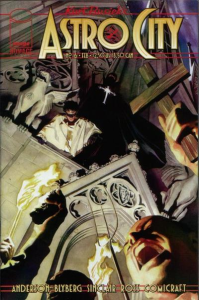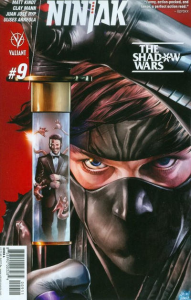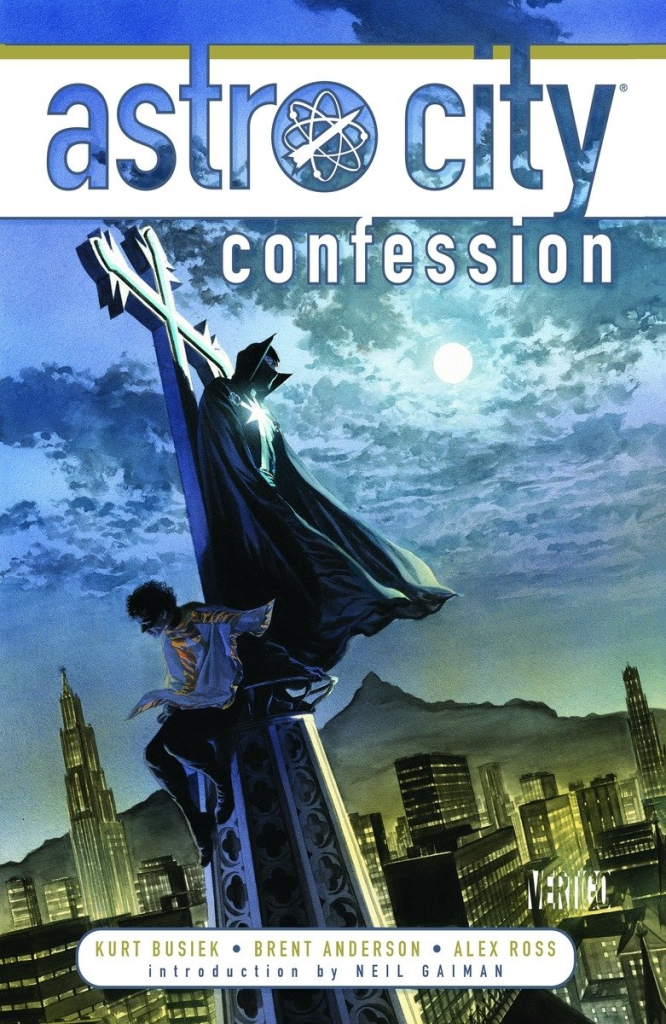The Dark Knight and his supporting cast have become so deeply familiar to comic book readers – and to consumers of pop culture in general – that sometimes the mere gesture of recontextualizing their imagery is enough to generate an appealing set-up.
For example, it’s fun to speculate how Batman’s saga would’ve turned out if Bruce Wayne had been inspired by something other than a bat flying through his window…
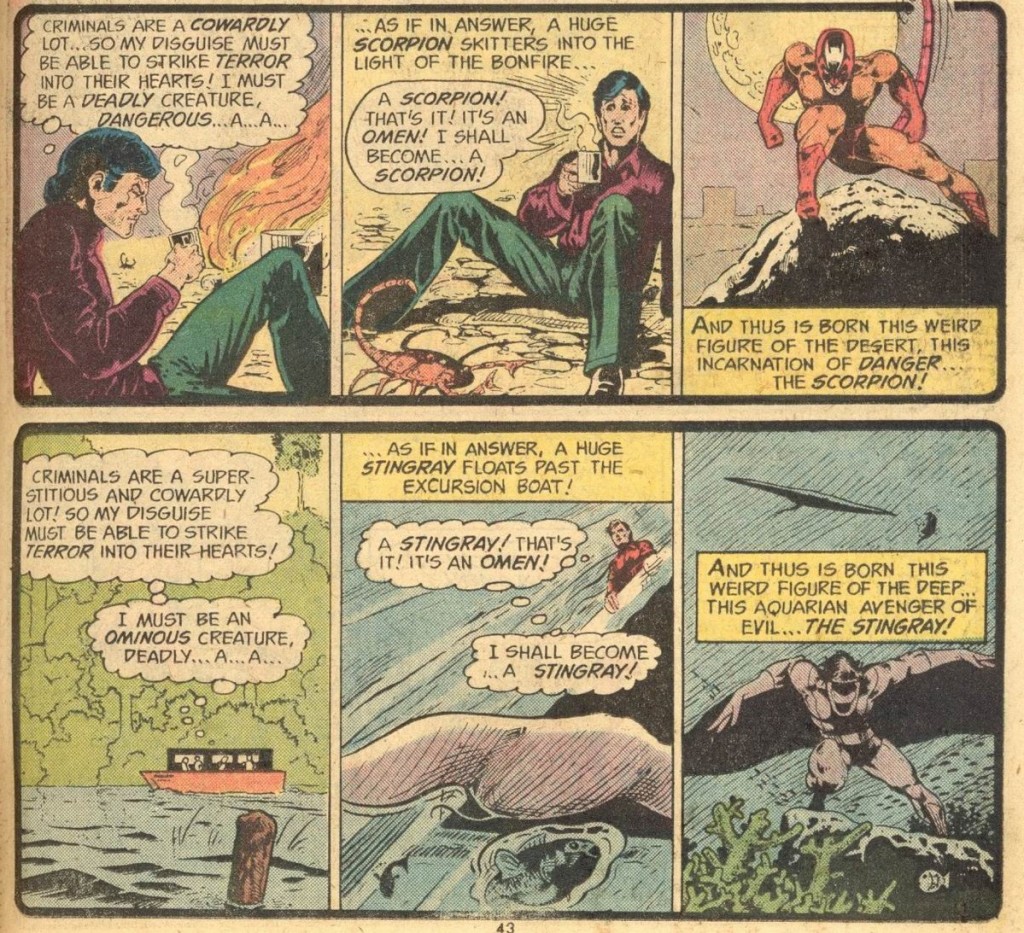 Batman #256
Batman #256
Besides the official Imaginary Stories and the various impersonators who have shown up in Batman comics throughout the years, there have also been plenty of fascinating takes on this icon beyond the DCU. Every superhero universe tends to have at least one thinly-veiled version of Batman, reimagining the Caped Crusader in a form that is recognizable yet sufficiently different to avoid a lawsuit. At their best, these characters rework the concept in entertaining ways, so that they don’t necessarily come across as knock-offs so much as an effective strategy to establish their franchise’s tone through its approach to this specific archetype. You can even argue that comics such as Irredeemable #18, Big Bang Comics (v2) #24, or Ultimate Adventures #1-6 are among the most interesting Batman Elseworlds in recent decades.
With that in mind, this week I want to discuss a couple of particularly engaging alternative versions of Batman.
THE CONFESSOR
It’s been almost 25 years since the first issue of Astro City hit the stands and it continues to be one of the most enjoyable superhero series out there. Writer Kurt Busiek and artists Alex Ross and Brent Anderson have created a fully-developed metropolis populated by variations of all the DC and Marvel characters, where they’ve been telling clever stories imbued with mature emotions. Referring to the series’ intricate detail, grounded artwork, compelling characterization, and poignant themes, I once described Astro City as ‘the brightest equivalent of Watchmen’ and I stand by it!
Most of the early issues were loosely connected standalone tales about different superheroes. The second multi-part arc, ‘Confession’ (Astro City (v2) #4-9), established the series’ version of Batman, i.e. a terrifying vigilante called The Confessor. As usual, the story can be read without any background, although those who have read previous issues will find payoffs for subtle, earlier threads (‘Safeguards’ brilliantly introduced the gothic neighborhood of Shadow Hill; ‘Reconnaissance’ did the same for the comedic hero Crackerjack, who plays a key role in ‘Confession’). Likewise, those familiar with the history of Batman comics will appreciate Easter Eggs like the fact that an ersatz-Robin goes to school at Robinson Prep (presumably named after Jerry Robinson, co-creator of the Boy Wonder), lives in a dorm at Sprang House, and hangs out at a pizza joint called Mooney’s (Dick Sprang and Jim Mooney being renowned artists of the Caped Crusader’s Golden Age adventures).
‘Confession’ is told from the perspective of a teenager who arrives at the series’ titular city and soon becomes the Confessor’s sidekick, adopting the identity of Altar Boy. True to the Dynamic Duo’s traditional relationship, the Confessor is all about tough love, sternly training his young partner while expecting him to figure out most things for himself. Gradually, though, the characters gain a rich inner life, growing into more than mere stand-ins for the originals. In part, this is helped by Alex Ross’ striking designs: both the Confessor’s ninja-priest look and Altar Boy’s combination of choirboy’s robe with Musketeer’s surplice are inspired choices (make sure to check out the early sketches at the end of the collected edition!).
Having developed his deductive abilities, halfway through the story our protagonist realizes the biggest twist of this reinterpretation of Batman, which I will now proceed to spoil:

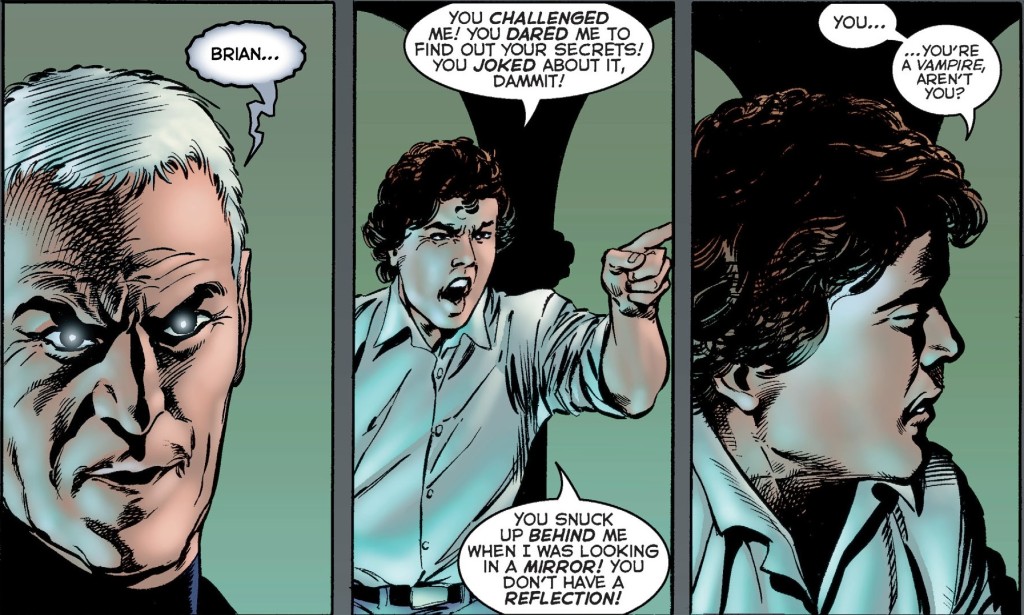 Astro City (v2) #6
Astro City (v2) #6
In How to Read Superheroes and Why, Geoff Klock convincingly argues that this approach to Batman’s abilities (his strength, speed, theatrical use of shadows and nocturnal darkness…) evokes Frank Miller’s grim, monstrous iteration of the character – in The Dark Knight Returns and Batman: Year One – by literally making him a monster.
On top of this metafictional layer – and along with the series’ typical interrogations over the meaning of heroism in general – ‘Confession’ spins an exciting, superbly crafted yarn that seamlessly balances multiple subplots and a diverse cast while raising the stakes until an out-of-this-world climax. We also get an amusing epilogue in which Altar Boy takes over the mantle of the Confessor, leading up to a closing sequence that definitely feels like a riff on DKR – not just because of the terse tone of the first-person narration, but because of the build-up to a final splash where a larger-than-life dark crimefighter seems to be having a hell of a time…

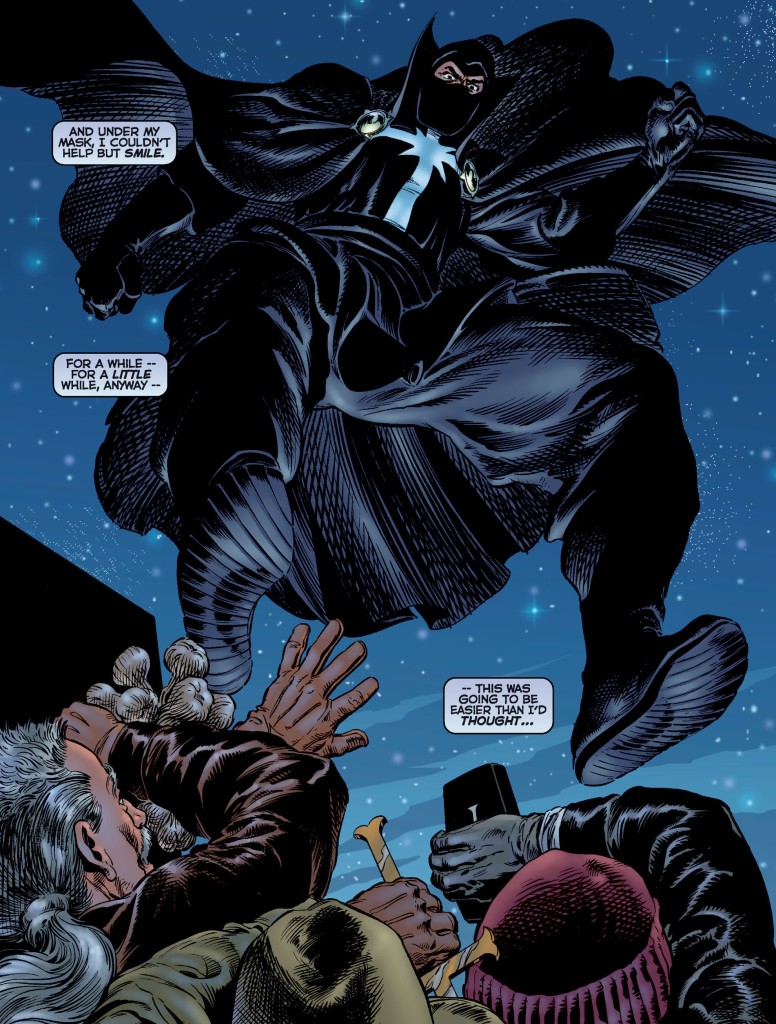 Astro City (v2) #9
Astro City (v2) #9
Geoff Klock has a nice take on this ending, framing it as part of Kurt Busiek’s wider reconstructionist agenda (i.e. re-infusing the superhero genre with a more uplifting vibe): ‘Like Busiek’s retirement of Sheldon in Marvels after transferring to him the cynicism of Watchmen, Astro City transfers the power of Miller’s Batman to the vessel of the Confessor and kills him to curtail the power of Miller’s text, making room for its own conception.’ As Klock points out, the human, non-monstrous Altar Boy – an orphan obsessed with his deceased father, called Thomas – is ultimately not a successor, but the Batman: ‘His taking on the persona of the Confessor is in its lighter tone a reestablishing of a more original vision.’ Thus, ‘Busiek returns a rejuvenated Batman to the reader.’ That is the version of the Caped Crusader that shows up in subsequent Astro City adventures, playing a particularly prominent role in the ‘Victory’ storyline.
(By the way, another reason to get the collected edition of ‘Confession’ is that it includes the beautiful bonus story ‘The Nearness of You,’ about a man who lost the love of his life to a Crisis-style retcon.)
NINJAK
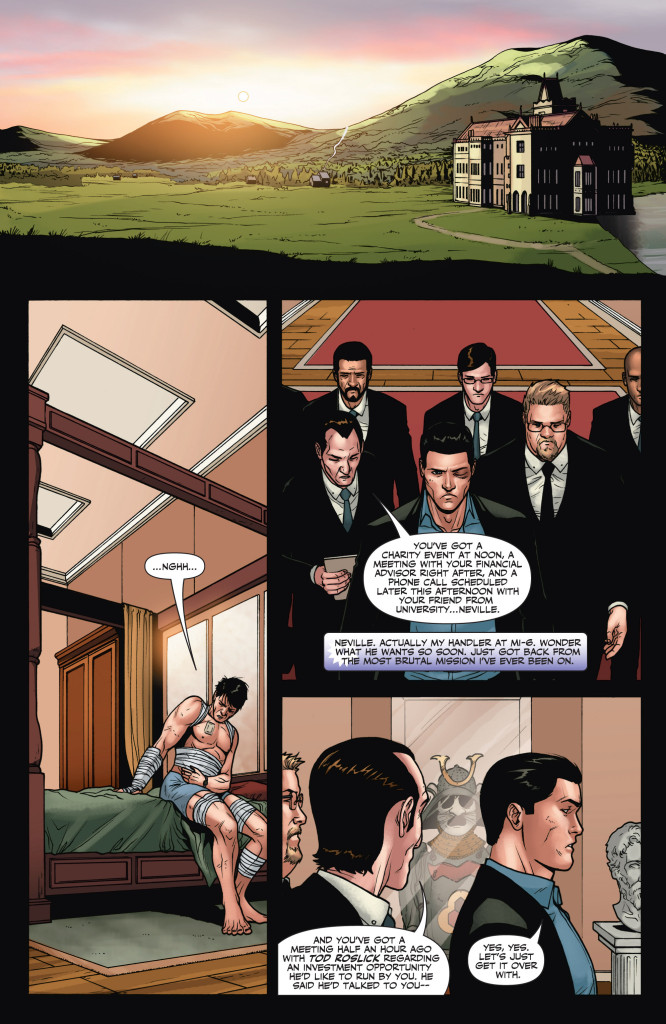 Unity #15
Unity #15
Going in a very different direction: what if Batman was both closer to James Bond *and* a sci-fi ninja assassin? What if, as a kid, Bruce Wayne had watched bloody samurai flicks rather than Zorro and had been regularly beaten up by Alfred? What if he had grown up to have many of the same skills as the Dark Knight yet much less respect for human life and ended up working for MI6?
Valiant’s version of Batman, Ninjak (who also goes by the more mundane name of Colin King), is a shameless mash-up of archetypes. In the right hands, though, not only does the coolness of the originals slip through, but there’s also a whole new world of awesomeness to be explored via this genius-mercenary-turned-secret-agent and his extensive ultra-technological bag of tricks (adhesive overwatch mini-cameras, battery-powered joint strengtheners, bionic super-charged exo-skeleton, high-speed wrist-activated poison dispersal needles, etc). Like the Dark Knight, at his best Ninjak is a perfect vehicle for larger-than-life bravado and visually striking stunts:
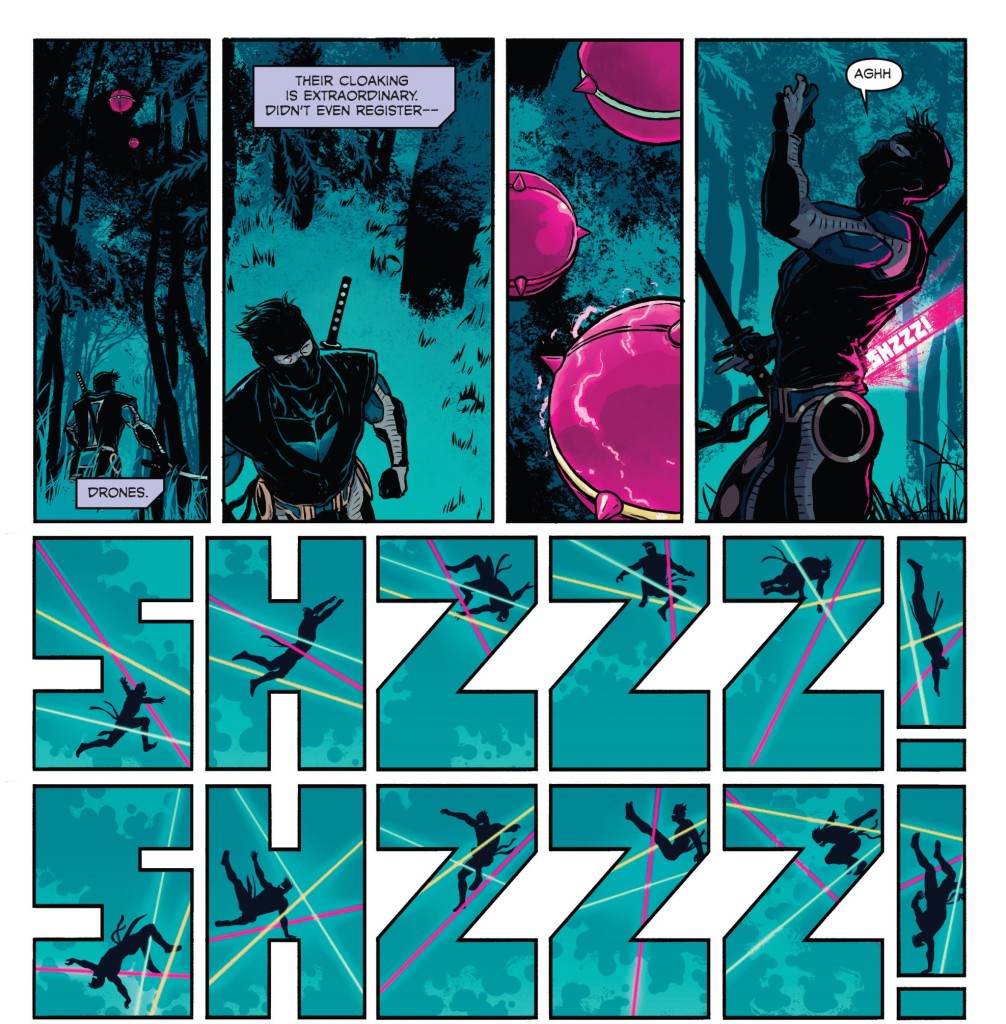 Ninjak (v3) #6
Ninjak (v3) #6
My favorite take on Ninjak is the rebooted version that showed up in 2012’s relaunch of the Valiant Universe, initially on the pages of X-O Manowar and later in all sorts of titles, especially in series and crossovers written by Matt Kindt (Unity, Divinity, The Valiant). Kindt, who really tapped into the character’s potential (Unity #11 shows him at his most outrageous), went on to pen a Ninjak ongoing, telling an action-packed super-spy/martial arts saga with adversaries that range from a sexy killer with psychokinetic hair to a master thief whose M.O. was to steal a thing and then replace it with an exact replica (in order to prove that ‘ownership is truly just a concept created by the mind’). The ‘Siege of King’s Castle’ storyline is particularly relentless. ‘The Fist & the Steel’ has a wittier tone, with Kindt throwing an older Ninjak and the Eternal Warrior into a surprisingly slapstick team-up. Issue #22 is a stunning, almost wordless bacchanal of violence.
The bulk of the artwork was in the hands of Valiant’s regulars Clay Mann, Doug Braithwaite, Diego Bernard, and Khari Evans, who stuck to the company’s house style for the more ‘serious’ books (as opposed to the cartoony look of comedic series like Quantum & Woody, The Delinquents, and Faith). They’re fine, but it’s the fill-in artists who really shine, including Juan José Ryp, Raúl Allén (as seen above), Stephen Segovia, and CAFU. Plus, the initial backups by Butch Guice and Brian Thies were stylish as fuck. Ulises Arreola deserves special praise for his eye-catching coloring throughout the series.
I’m also a fan of the latest relaunch, titled Ninja-K and written by Christos Gage, with art by Tomás Giorello, Juan José Ryp, and Roberto De La Torre.
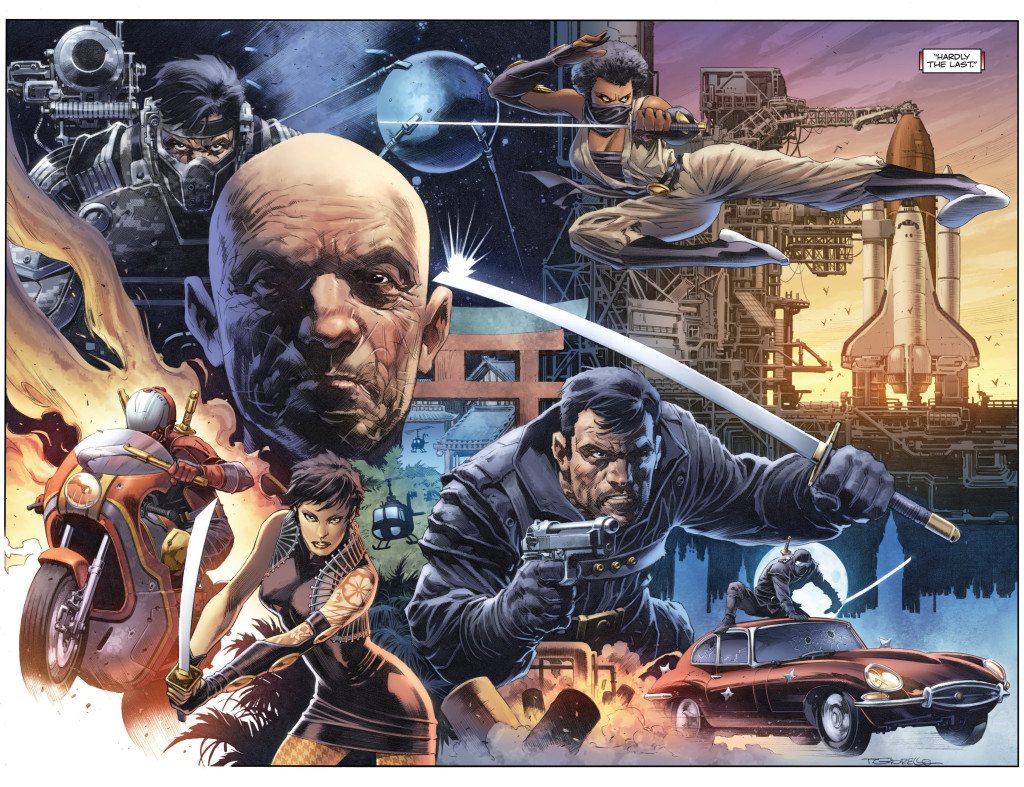 Ninja-K #1
Ninja-K #1
The idea of turning Ninjak into a legacy character going back generations is far from original (Kindt himself pulled a similar trick with Bloodshot and Unity), but Gage – one of the most reliable ‘hired guns’ in the business – has an unquestionable knack for this kind of pulpy material. He includes the obligatory intertextual winks at the pop cultural zeitgeist: our hero’s predecessor from the ’60s resembles Sean Connery, the one from the ‘70s looks straight out of a Blaxploitation flick, and of course the ‘80s version is an over-the-top cyborg.
After first pushing the series into more Bond-like territory, Gage amped up the superhero angle, making the most out of some of Valiants’ underused characters and leftovers from events like the Armor Hunters crossover. Plus, he delved into Ninjak’s on-again, off-again relationship with Livewire, one of Valiant’s neatest superheroes, whose teletechnopath powers are always a good pretext for mind-bending science fiction.

